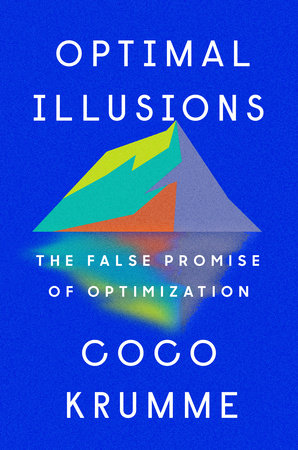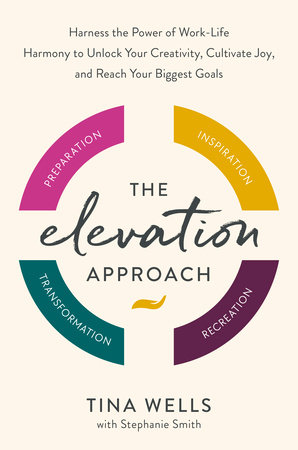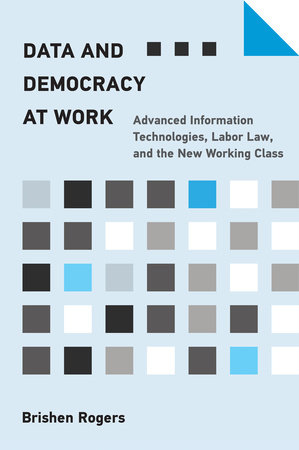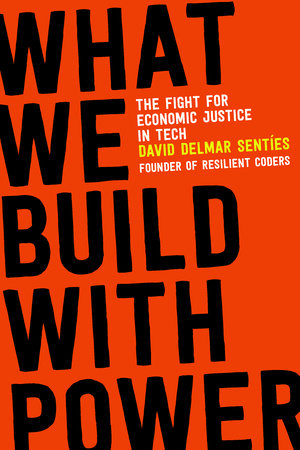Quick Summary
One Sentence Summary
“The Dip” by Seth Godin is a compelling guide on when to persevere and when to quit, offering insights into mastering the art of strategic quitting.
Big Idea
The core concept of “The Dip” is that success comes from quitting the wrong stuff at the right time, focusing on the essential, and pushing through the tough period (the dip) to become the best in your field.
Five Key Ideas
- Understanding the Dip: Recognizing when you’re facing a dip, a temporary setback that you can overcome with persistence.
- Quitting Strategically: Learning when to quit projects or pursuits that don’t yield results and focusing on what truly matters.
- Overcoming Challenges: Strategies for pushing through the dip, embracing the struggle, and leveraging it for growth.
- The Cul-de-Sac and the Cliff: Differentiating between dips and dead ends (cul-de-sacs) or dangerous paths (cliffs).
- Excellence and Being the Best: The importance of striving to be the best in your domain and how the dip helps in achieving that.
Actionable Advice
Identify the dips in your personal and professional life. Assess if they’re worth pushing through or if it’s time to quit and realign your focus. Embrace challenges as opportunities for growth and aim for excellence in your chosen field.
About the Author
Seth Godin is an acclaimed author, entrepreneur, and marketing expert known for his insightful books on marketing, leadership, and personal growth, such as “Purple Cow” and “Linchpin“.
Read Next
For further exploration of success and mastery, consider reading “Outliers” by Malcolm Gladwell, which delves into the factors that contribute to high levels of success. For insights into habit formation and achievement, “Atomic Habits” by James Clear is an excellent follow-up.
In Depth
Understanding the Dip
Recognizing and Embracing Challenges
In “The Dip,” Seth Godin introduces the concept of the dip as a significant challenge or setback that one encounters on the path to mastery or success. It’s the tough period that separates those who persevere from those who give up.
Godin explains that almost everything worth doing has a dip. It’s that period of intense learning, struggle, and doubt. For example, when starting a new business, the initial excitement often gives way to the harsh realities of market competition and financial pressure – that’s the dip. Godin emphasizes, “The Dip is the long slog between starting and mastery.”
In my experience, this concept is spot-on. I recall when I started learning to code. The initial weeks were thrilling, but soon, the complexity of programming languages plunged me into the dip. It was a period filled with frustration and self-doubt.
Godin provides a detailed example in the book, referring to the sales profession. He explains that many salespeople experience a dip after the initial few successes. The market gets tougher, and rejections become frequent. This dip is where many give up, but it’s also where true sales professionals are made. Those who push through, refine their skills, and adapt their strategies emerge as top performers.
The key to understanding the dip is recognizing it for what it is – a test of commitment and resilience. It’s not a sign to quit immediately; rather, it’s a period demanding introspection and strategic thinking. Are you willing to invest the time and effort to push through? Is the goal you’re pursuing worth the struggle? These are critical questions to ask when you find yourself in a dip.
In my coding journey, realizing I was in a dip helped me refocus. I sought help, practiced diligently, and gradually, coding became more intuitive. That struggle in the dip significantly improved my problem-solving skills and coding proficiency.
Godin’s quote resonates profoundly here: “If it is worth doing, there’s probably a dip.” This perspective is empowering. It suggests that facing a dip is not a misfortune but an indication that you’re on a path worth pursuing. The dip is not just an obstacle; it’s an opportunity – a filter that separates those who really want it from those who only thought they did.
So, when you encounter a dip, don’t panic. Recognize it, assess your commitment, and if it’s worth it, brace yourself for the challenge. The dip is where true growth happens, and emerging from it often leads to significant achievements. It’s a tough but rewarding journey, and understanding this concept can be a game-changer in both personal and professional endeavors.
Quitting Strategically
Knowing When to Let Go
Seth Godin emphasizes the importance of quitting strategically. Not all dips are worth enduring. Some are dead ends, leading nowhere. The skill lies in discerning which challenges will lead to growth and which are futile.
In “The Dip,” Godin writes, “Strategic quitting is the secret of successful organizations.” This means recognizing when a project or pursuit is a dead-end – a cul-de-sac – and having the courage to quit. Quitting isn’t failure; it’s making a decision that something else is more worth your time and effort.
A detailed example in the book revolves around the story of a software company. They spent years developing a product, but despite the effort and resources poured into it, the product failed to gain significant market traction. Instead of persisting in this dip, the company decided to quit this project and redirected their focus. This strategic quitting allowed them to allocate resources to more promising ventures, ultimately leading to their success.
In my experience, understanding when to quit is as crucial as knowing when to persist. I’ve been involved in projects that, despite hard work, showed minimal progress. The decision to quit these projects was tough but necessary. It freed up time and resources for more fruitful endeavors.
Strategic quitting involves careful assessment. Ask yourself: Is this dip leading to a breakthrough, or is it a dead-end? Are the time and resources invested yielding proportional results? If not, it might be time to reconsider your commitment.
Godin succinctly puts it: “Quitting when you hit a dead end is not just a good idea; it’s your obligation.” This perspective is liberating. It gives you permission to let go of what’s not working, to make space for what might.
Recognizing the difference between a challenging dip and a dead-end cul-de-sac is a skill that can significantly impact your personal and professional life. Quitting isn’t about giving up on everything challenging; it’s about focusing your efforts on challenges that matter and have potential. This strategy can lead to more effective use of your time and a higher chance of success in your endeavors.
So, learn to quit strategically. It’s not a sign of weakness but a powerful tool in your arsenal for success. Know when to persevere and when to let go. This discernment can make all the difference.
Overcoming Challenges
Strategies for Pushing Through
Seth Godin delves into strategies for overcoming challenges, emphasizing that navigating through the dip requires more than just persistence; it requires smart tactics and a clear vision of the end goal.
Godin asserts, “The Dip is the long slog between starting and mastery.” This slog is filled with challenges that test your resolve, skills, and commitment. But it’s also where the magic of transformation and growth happens.
A compelling example in the book is about a well-known fast-food franchise. When starting, they faced numerous challenges: perfecting their recipe, establishing a brand, and facing intense competition. Their dip was steep and long. However, through strategic decision-making, relentless focus on quality, and an unwavering commitment to their vision, they pushed through the dip. Today, they are a globally recognized brand.
This example underscores that overcoming challenges in the dip often requires a laser-focused approach. It’s not just about working harder but also working smarter. It’s about constantly refining your strategies, learning from setbacks, and keeping your eyes on the prize.
In my experience, overcoming challenges is about adapting. When I faced significant obstacles in a project, the breakthrough came from re-evaluating our approach, seeking feedback, and being willing to make changes. Staying rigid in your methods can keep you stuck in the dip longer than necessary.
Godin provides a poignant quote to illustrate this point: “If you can’t make it through the Dip, don’t start.” This statement highlights the need for a realistic assessment before taking on a challenge. Understand what you’re getting into, prepare for the hardships, and if you commit, be ready to adapt and fight through the dip.
Overcoming challenges in the dip also involves maintaining a positive mindset. The dip can be disheartening, but viewing it as an essential part of the journey towards mastery can help maintain motivation. Each challenge overcome is a step closer to your goal.
Another key strategy is to continuously upskill and seek knowledge. In the dip, every piece of learning, every new skill acquired, can be a tool to help you overcome challenges. Be open to learning from others, from your own failures, and constantly seek ways to improve.
So, when facing challenges in the dip, remember, it’s about strategic persistence, adaptability, and a clear vision. These challenges are not just obstacles; they’re stepping stones to mastery. Embrace them, learn from them, and let them propel you forward towards your goal. Overcoming challenges in the dip isn’t easy, but it’s often where the most significant growth and breakthroughs occur.
The Cul-de-Sac and the Cliff
Differentiating Between Dead Ends and Dangerous Paths
Seth Godin introduces two critical concepts in “The Dip”: the Cul-de-Sac and the Cliff. Understanding these can be crucial in deciding whether to push through a challenge or quit.
A Cul-de-Sac, as Godin describes, is a situation where no matter how hard you work, you don’t get anywhere. It’s a dead end. The Cliff, on the other hand, represents scenarios where you might be progressing, but suddenly things go drastically wrong, leading to a downfall.
Godin writes, “The Cul-de-Sac (French for ‘dead end’) is a situation where you work and you work and you work and nothing changes.” This vividly paints the frustration and futility of being stuck in a Cul-de-Sac.
An example from the book is a job that offers no growth or learning opportunities. You might work hard, hoping for a promotion or recognition, but the structure of the company or the nature of the job itself is a Cul-de-Sac. There’s no forward movement, no matter the effort.
In contrast, the Cliff is likened to scenarios such as aggressive business expansion without solid foundations. It might look like success is on the horizon, but the overextension leads to a collapse – the Cliff.
In my experience, distinguishing between these two scenarios is vital. I’ve seen colleagues stuck in jobs that are Cul-de-Sacs, hoping for a change that never comes. Recognizing this earlier can save time and open doors to better opportunities.
It’s crucial to regularly assess your situation. Are you in a Cul-de-Sac, putting in effort without any progress? Or are you heading towards a Cliff, where the path you’re on might lead to a sudden downfall?
Godin’s advice here is invaluable: “Knowing that you’re in a Cul-de-Sac and dreaming of getting out is the first step to leaving.” Acknowledging your situation is the first step towards making a change.
Similarly, being aware of the Cliff allows you to take precautionary steps. It’s about balance and not overreaching to the point of jeopardizing everything you’ve worked for.
Understanding the Cul-de-Sac and the Cliff helps in making informed decisions. It allows you to realign your efforts towards paths that offer real growth and to avoid those that pose hidden dangers.
So, take the time to analyze your circumstances. Are you stuck in a Cul-de-Sac or heading towards a Cliff? This understanding is crucial for strategic decision-making, whether it’s about persisting, quitting, or changing direction. Identifying these scenarios early can save time, effort, and even prevent potential crises.
The Power of Being the Best
Striving for Excellence
Seth Godin highlights the immense power and advantage of being the best in your field. He argues that being average or good isn’t enough in a competitive world. Excellence sets you apart.
In “The Dip,” Godin asserts, “If you can’t be the best in the world at your micro-niche, don’t bother.” This quote underscores the importance of aiming for the top, not just participating.
A compelling example from the book is the story of a small-town real estate agent. Instead of trying to compete broadly, she focused on becoming the best agent for historic homes in her area. This specialization and her commitment to being the best in that niche set her apart, leading to significant success and recognition.
This idea resonates with my experiences. Being the best or striving for it creates opportunities. When I focused on excelling in a specific skill within my profession, it opened doors that were previously closed. It’s about finding your niche and dominating it.
Godin emphasizes that being the best brings its own rewards. The best get more attention, more opportunities, and more rewards. It’s not just about being slightly better than competitors; it’s about being so good that you’re the obvious choice.
The pursuit of being the best requires dedication. It’s about continually honing your skills, understanding your market, and consistently delivering exceptional value. It’s not an easy path, but it’s one that can lead to substantial rewards.
Godin’s principle also involves understanding your strengths and weaknesses. Know what you can be best at. It’s not about being the best at everything but finding that specific area where you can truly excel.
Moreover, being the best in your niche can help you navigate the dip effectively. When you’re striving for excellence, the challenges in the dip become stepping stones towards your goal. It gives you a clear focus and a strong motivation to push through tough times.
So, embrace the idea of being the best. Find your niche, focus on excellence, and commit to it. This approach not only helps in standing out but also in navigating the challenges on the path to success. Being the best isn’t just a status; it’s a strategy for extraordinary achievements.
More
Actionable Advice
-
Identify Your Dip: Recognize the challenging phase in your pursuit and understand its nature.
-
Assess if It’s Worth It: Determine if the rewards after the dip are worth the struggle.
-
Set Clear Goals: Know what you aim to achieve by enduring the dip.
-
Develop a Strategy: Plan how to navigate through the dip effectively.
-
Allocate Resources Wisely: Invest time and effort where they’re most likely to pay off.
-
Learn to Quit When Necessary: Understand when a situation is a dead-end and have the courage to let go.
-
Embrace Challenges: View challenges as opportunities for growth and learning.
-
Adapt and Pivot: Be flexible in your approach and willing to change tactics when needed.
-
Strive for Excellence: Aim to be the best in your chosen field or niche.
-
Seek Feedback: Regularly evaluate your progress and be open to constructive criticism.
-
Stay Committed: Persistence is key, but ensure it’s directed towards worthwhile goals.
-
Celebrate Small Wins: Acknowledge and celebrate progress to maintain motivation.
-
Stay Informed: Keep learning and staying updated in your field to navigate the dip effectively.
About the Author
Seth Godin is an American author, entrepreneur, and marketing expert. Born on July 10, 1960, in Mount Vernon, New York, Godin holds an MBA from Stanford Graduate School of Business. He launched his career in the book packaging industry and later founded Yoyodyne, a marketing company, which he sold to Yahoo. Godin’s beliefs center around innovative marketing, leadership, and the spread of ideas. He advocates for “permission marketing” — marketing that respects the consumer. His blog is one of the most popular in the world, and he’s authored over 20 books, including bestsellers like “Purple Cow” and “Linchpin.” Seth Godin is known for challenging traditional business norms and encouraging people to think differently. His work emphasizes the importance of standing out, being remarkable, and creating work that matters.
Read These Next
You might like these similar books
- “Purple Cow” by Seth Godin
- “Linchpin: Are You Indispensable?” by Seth Godin
- “Outliers: The Story of Success” by Malcolm Gladwell
- “Start with Why: How Great Leaders Inspire Everyone to Take Action” by Simon Sinek
- “Drive: The Surprising Truth About What Motivates Us” by Daniel H. Pink
FAQ
Q: What is ‘The Dip’ about?
A: ‘The Dip’ is about understanding when to quit and when to stick with a challenging situation in life or work.
Q: Who should read ‘The Dip’?
A: It’s ideal for entrepreneurs, business leaders, and anyone facing tough choices about when to persevere or quit.
Q: How long is the book?
A: It’s a quick read, roughly 80 pages.
Q: Does ‘The Dip’ offer practical advice?
A: Yes, it provides actionable strategies for assessing challenges and making informed decisions.
Q: Is ‘The Dip’ based on research?
A: Seth Godin uses real-world examples to illustrate his points, blending research with practical insights.
Q: Can ‘The Dip’ help in personal life decisions?
A: Absolutely. The principles in the book apply to both professional and personal life challenges.







